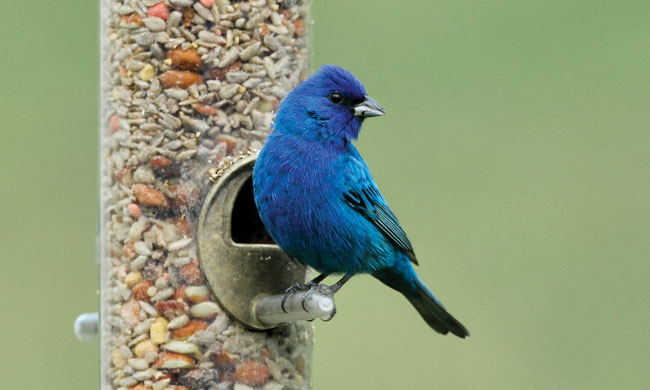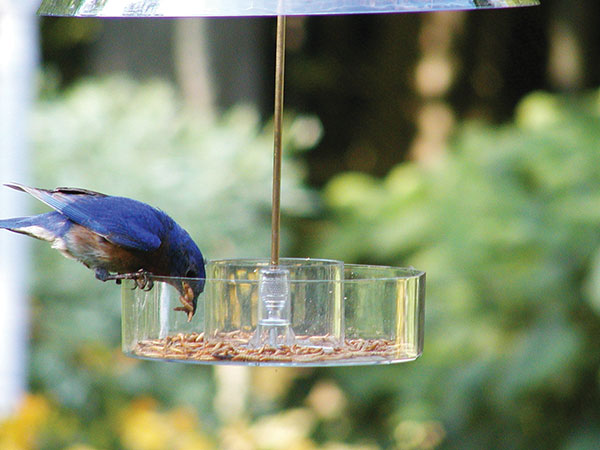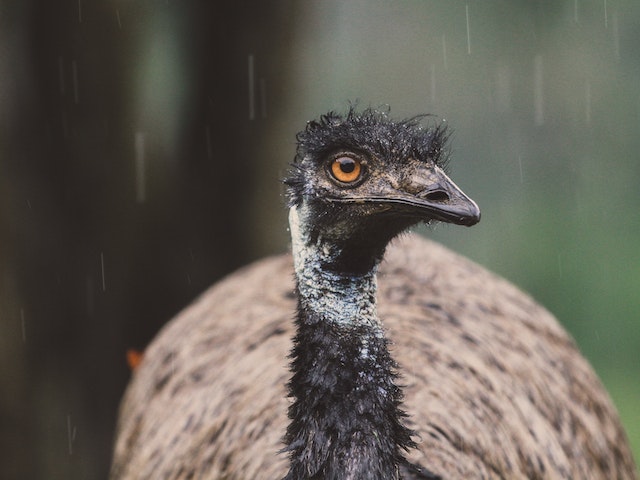How Climate Change Impacts Birds, Their Feeding Habits and How to Help from Home

(Joan Casanova) Bird feeding is a common practice in the United States, with more than 59 million Americans participating, according to the U.S. Fish & Wildlife Service. In addition to providing aesthetic and recreational benefits, bird feeding can have positive impacts on bird populations.
According to the National Audubon Society, birds provide important ecosystem services, such as pollination, pest control and seed dispersal. In fact, around 87% of flowering plants rely on animal pollinators, including birds, to reproduce and grow, according to a study published in “Science.” Birds also consume fruits and berries then spread the seeds, which helps maintain biodiversity and promotes the growth of new plants.
Considered good indicators of the health of the ecosystem, changes in bird populations and behaviors can signal changes in the environment, such as pollution, habitat loss and climate change. As temperatures, weather patterns and ecosystems change, it can affect the availability of food for birds, which may alter their behavior.
Feeding birds can be a beneficial practice that helps them cope with climate change. Consider these benefits:
- Supplemental Food: Bird feeders provide a supplemental source of food for birds when natural food sources may be scarce due to prolonged droughts or severe storms. Bird feeding can help birds maintain energy levels, especially during breeding or migration when nutritional needs are higher.
- Range Shifts: Climate change can cause shifts in the distribution and abundance of bird species. Feeders can serve as “refuges” for birds, providing reliable food sources as they move in search of suitable habitats.
- Behavioral Adaptations: Some species may alter their feeding behaviors due to changes in timing of insects hatching or plants flowering, which can affect the availability of natural food sources. Bird feeders can help bridge these gaps, providing a stable source of food when traditional sources are disrupted.
Feeders
 To attract more birds this season, it’s important to offer quality feed in a variety of bird feeder types placed at different heights.
To attract more birds this season, it’s important to offer quality feed in a variety of bird feeder types placed at different heights.
Traditional tube feeders are basic, all-purpose, must-have feeders that work well for finches, nuthatches and other small birds that cling. Made with state-of- the-art materials to prevent warping and discoloration, Cole’s Terrific Tube Feeder features a quick-clean removable base.
Simply push a button and the bottom of the feeder comes off for easy access. Rinse well with soapy water, submerge in a 9-1 water-bleach solution, rinse and dry. Then reattach the bottom; there’s no disassembly or assembly of multiple parts necessary. Regular cleaning of feeders is essential, preventing mold, germs and disease.
Another option, bowl feeders, can serve not only seeds, but also dried mealworms, fruit and suet in cake or kibble form. For example, Cole’s Bountiful Bowl Feeder comes with an adjustable dome cover you can raise or lower to protect from rain and prevent larger birds and squirrels from getting to the food.
Popular Foods
In addition to feeders, offering a variety of foods is vital for inviting different species to your backyard.
- Birdseed: Not all birdseed is created equal. Look for quality blends without filler seeds like red millet and oats. All-natural seed, containing no chemicals or mineral oil, is safe and more appealing to birds. Consider researched, specially formulated options like all-natural black oil sunflower, Cole’s “Hot Meats” (sunflower meats infused with habanero chile peppers) or Special Feeder blend, which is packed with black oil sunflower, sunflower meats, black striped sunflower, raw peanuts, safflower and pecans.
- Dried Mealworms: Full of energy, essential nutrients, fats and proteins, mealworms are a preferred food for adult songbirds. Dried mealworms are easy to feed, less messy and lack the “ick” factor of live worms.
- Fresh Fruit: Apple and orange halves and chunks of banana are favorites for orioles and tanagers.
- No-Melt Suet: Perfect for insect-eating birds, high-fat food provides abundant calories and rich nutrition.
Don’t forget, birds need water just as much as humans. Drinking water helps regulate body processes, improves metabolism and maintains health. Birds also use water for preening and bathing, and on hot days, standing in cool water or taking a quick splash can help them keep cool.
Find more solutions to bring birds to your backyard at ColesWildBird.com.
Photos courtesy of Cole’s Wild Bird Products
SOURCE:
Cole’s Wild Bird Products
Articles posted on this site are the works of their respective authors. They may be for informational or entertainment purposes and do not necessarily represent the views of this website nor imply endorsement by this website, nor endorsement of this site by the authors, nor do we get paid for placing articles on this site. Please do your research and seek professional advice before using any information.

